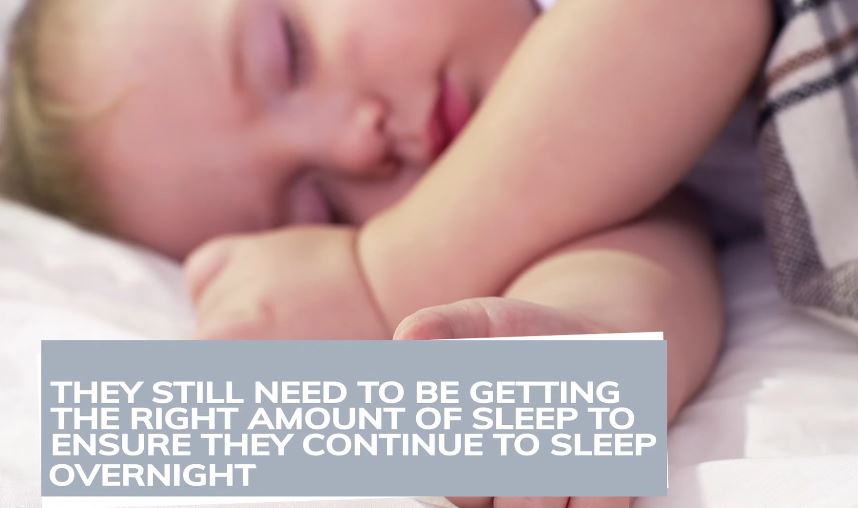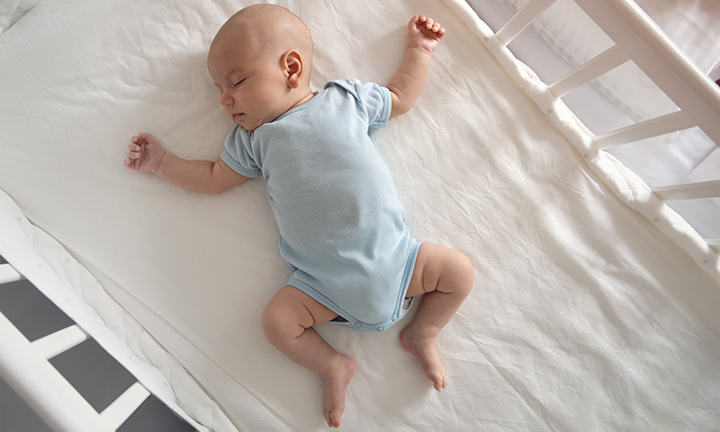How to Keep Toddler in Bed When Transitioning from Crib? (Tips for a Smooth Change)
Transitioning from a crib to a toddler bed can be exciting yet challenging. Establishing a calming bedtime routine and addressing any sleep challenges is key to keeping your toddler in bed. I’ve found that small adjustments in their environment and routine can make a significant difference.

Safety is also a priority during this time. It’s essential to ensure that the sleeping area is safe and comfortable. I’ll share some effective strategies to help keep your little one in bed at night, making this transition smoother for both of us.
Crucial Findings
- A consistent bedtime routine helps ease the transition.
- Ensuring a safe sleep environment reduces nighttime wandering.
- Addressing sleep challenges early can prevent ongoing issues.
Understanding the Transition
When moving from a crib to a toddler bed, recognizing the right time and the benefits can make the process smoother. It’s important to pay attention to signs of readiness and understand how this change can positively impact your child.
Signs Your Toddler Is Ready
I watch for specific signs indicating my toddler is ready for the move. One key sign is if my child can climb out of the crib easily.
The American Academy of Pediatrics suggests transitioning when the crib railing is lower than the child’s chest.
Another sign is if my toddler shows interest in sleeping in a “big kid” bed. This can happen through conversations, pointing out beds in stores, or asking about older siblings.
If my child can follow simple rules, like staying in bed at bedtime, that’s also a good sign. These indicators help determine the right timing for this important step.
Benefits of Transitioning
Transitioning to a toddler bed opens new opportunities for me and my child. I find that this change fosters independence.
My toddler learns to get in and out of bed safely, which builds confidence.
This transition also allows for a smoother bedtime routine. I can introduce new comforting practices, such as a special blanket or story time, which can help my child feel secure.
Moving to a toddler bed can be essential when preparing for a new sibling. It frees up the crib, allowing my growing family to adapt without issues.
Overall, the transition positively impacts my child’s development and family dynamics.
Preparing for the Transition
Before making the switch from a crib to a toddler bed, I need to take steps that will help my child feel safe and comfortable.
The right bed, a secure environment, and involving my toddler in the process can make a big difference.
Choosing the Right Bed
Selecting a toddler bed is important. I want to choose one that is the right size for my child. A bed that is low to the ground helps my toddler get in and out safely.
I may also consider purchasing a bed with side rails. This can prevent falls during sleep.
It’s also a good idea to let my child pick out bedding featuring their favorite characters. This involvement makes the new bed more appealing.
Setting up a Safe Environment
Creating a safe sleep environment is essential for my toddler’s security. I need to remove any hanging cords, curtains, or other items that could pose a risk. Keeping the bedroom tidy helps avoid potential hazards.
I can also use baby gates at stairways. This will prevent any falls if my toddler gets out of bed.
I should put a bell on the bedroom door to hear if my child leaves the room during the night.
Involving Your Toddler in the Process
Getting my toddler involved can make the transition smoother. I can talk to them about the new bed and explain what to expect. Choosing bedding together can increase their excitement.
I might also let my child test the bed out during the day for naps. This gives them a chance to get comfortable in the new space.
I can read bedtime stories in the new bed, creating positive associations with it.
Creating a Bedtime Routine
Creating a consistent bedtime routine helps signal to your toddler that it’s time to sleep. Keeping a well-structured routine can help ease the transition from crib to bed.
I find that focusing on specific rituals and calming activities can make a difference.
Establishing Consistent Bedtime Rituals
To develop effective bedtime rituals, I stick to a set schedule. I choose a specific time for bed and follow the same steps each night. This might include activities like:
- Taking a bath: A warm bath can help relax my toddler.
- Reading a story: Sharing a book creates a cozy feeling and promotes bonding.
- Singing a lullaby: Soft music can calm the mind and signal bedtime.
I also create a pleasant environment by dimming the lights and ensuring the room is quiet.
Keeping these rituals consistent helps my toddler understand that bedtime is approaching. The repetition reassures them, making the transition smoother.
Calm Activities Before Bed
Before bed, I focus on calm activities that prepare my toddler for sleep. High-energy play should be avoided, as it can make it harder for them to settle down. Instead, I opt for activities like:
- Puzzle time: Simple puzzles can be engaging yet calming.
- Coloring: Gentle coloring allows for creativity without excitement.
- Gentle stretching: A few simple stretches can help release any remaining energy.
I make sure to keep everything quiet and soft during this time. This helps to create a peaceful environment.
By doing calm activities consistently, my toddler is more likely to stay in bed when it’s time to sleep.
Addressing Sleep Challenges
Transitioning from a crib to a toddler bed can bring various sleep challenges.
I want to help you manage these issues effectively to ensure your toddler feels secure and comfortable in their new sleeping space.
Dealing with Nighttime Visits
It’s common for toddlers to leave their bed at night. To minimize this, I recommend setting clear boundaries. Use a simple phrase like, “It’s time to sleep,” when you guide them back to bed.
Create a calming night routine that signals bedtime. This might include reading a story, dimming the lights, and spending a few quiet moments together.
If your toddler gets out of bed, consistently return them to bed calmly but firmly without engaging in lengthy conversations.
A baby monitor can help you keep an eye on them. You might also consider placing a bell on their bedroom door. This way, I can hear if they leave their room at night.
Handling Fear or Anxiety
Fear and anxiety about the dark or separation may arise during this transition. I find it helpful to address these fears by reassuring my toddler.
Talk openly about their feelings. Use a nightlight or a soft glow to help your child feel more secure at night.
Incorporate comfort items, like a favorite stuffed animal. This can provide emotional support.
I can also talk to my child about what to do if they wake up scared. Encourage them to stay in bed and call for me instead of leaving their room.
Using calming techniques, like deep breathing or counting, can also be effective. Practicing these methods together during the day can prepare them for nighttime.
Using Positive Reinforcement
Positive reinforcement is an effective strategy to encourage good sleep habits. I reward my toddler for staying in bed through praise or small rewards.
For example, I can place a sticker on a chart each time they remain in bed all night.
Creating a fun bedtime chart can motivate my child. After a certain number of stickers, I can offer a special treat or activity.
This approach reinforces desired behavior while making bedtime more enjoyable.
I celebrate their successes. Simple celebrations can boost their confidence and motivate them to continue staying in bed.
Positive reinforcement turns bedtime into a positive experience.
Ensuring Safety and Comfort
Transitioning from a crib to a toddler bed can be exciting but also challenging. Ensuring safety and comfort is crucial during this time.
Taking the right steps can help make this change smoother for both you and your child.
Bed Rails and Safety Precautions
I recommend using bed rails to prevent falls during the night. Bed rails provide a physical barrier, helping your toddler stay secure while they sleep.
It’s important to choose adjustable rails that fit the bed well.
I make sure the bed is positioned away from walls or furniture to avoid bumps or falls.
Checking the mattress is essential, too. It should fit snugly within the bed frame to prevent gaps.
Finally, I keep the bedroom floor clear of any toys or obstacles. This minimizes tripping hazards when my child gets out of bed. Safety checks like these can give you peace of mind.
Comfort Items and Sleepwear
Comfort is key for a good night’s sleep. I encourage my child to choose a few favorite stuffed animals or blankets to help them feel secure in their new bed.
Familiar items can create a calming and cozy sleeping environment.
For sleepwear, I prefer soft, breathable fabrics. This keeps my toddler comfortable throughout the night.
Avoiding clothes that are too tight or restrictive can help them sleep better.
I establish a calming bedtime routine. This can include reading a story or gentle music.
These small comforts can make a big difference in helping my child adjust to sleeping in a toddler bed.
When to Consult a Professional
It’s important to know when to reach out for help during the transition from crib to toddler bed.
Recognizing ongoing sleep challenges and understanding when expert advice might be necessary can make a big difference in this process.
Recognizing Persistent Issues
I should pay attention to my child’s sleeping patterns. If my toddler frequently gets out of bed or struggles to stay asleep, this could signal a problem.
Key signs to watch for include:
- Frequent nighttime awakenings: If my child wakes multiple times each night, it may be time to consult someone.
- Difficulty falling asleep: If settling down becomes increasingly tough, professional help might be needed.
- Increased anxiety or fear: If my child experiences new fears about sleeping alone, expert guidance can help address these emotions.
Recognizing these signs early can lead to effective solutions.
Seeking Guidance from Child Sleep Experts
If my attempts to help my child stay in bed aren’t working, I can seek advice from child sleep experts.
These professionals specialize in sleep issues and can provide tailored strategies.
When I contact a sleep expert, I can expect:
- Personalized advice: They can evaluate my child’s specific situation and suggest methods that fit our needs.
- Supportive techniques: Experts often offer gentle sleep training methods that promote comfort.
- Resources for parents: They may also share materials or workshops to help me understand my child’s sleep better.
Consulting a professional can greatly ease this transition and improve my child’s sleep routine.
Frequently Asked Questions
I often get questions about transitioning toddlers from a crib to a bed. Here are some important points to consider regarding readiness, smooth transitions, and strategies for keeping your child in bed.
What are the signs that my toddler is not ready to transition from crib to bed?
If your toddler is still waking up frequently at night, has trouble falling asleep alone, or tries to escape the crib regularly, they might not be ready for a bed.
If they often ask for reassurance or seem anxious at bedtime, these can also be signs that they need more time in the crib.
What steps should I take when my toddler’s transition to a toddler bed is not going smoothly?
If the transition is tough, try to stay calm and consistent. I recommend returning to the crib temporarily if your child feels very upset.
You can also create a bedtime routine to offer comfort, like reading stories or using a nightlight.
At what age is it appropriate to move a toddler from a crib to a bed?
A child is typically ready for a toddler bed between 18 months and 3 years. Every child is different, so it’s important to look for signs of readiness.
If they are climbing out of the crib or showing interest in a bed, it might be a good time to consider the change.
How can I transition my child to a bed after co-sleeping?
When moving from co-sleeping to a bed, I suggest starting with a gradual approach. Begin by having your child nap in the bed during the day.
At night, stay close while they fall asleep to help them feel secure. You can gradually move to a different room as they adjust.
When should I consider moving my toddler from a toddler bed to a twin bed?
Most toddlers stay in a toddler bed until around age 5 or when they outgrow the bed.
If your child starts complaining about being cramped or shows signs of climbing out more often, it might be time to upgrade to a twin bed for more space and comfort.
What strategies can be used to keep a toddler in bed throughout the night during the transition period?
I find that a few strategies can help. Establishing a calming bedtime routine can set the tone for sleep. Using a nightlight can ease fear of darkness.
I also recommend placing some favorite stuffed animals in bed to provide comfort and company through the night.







